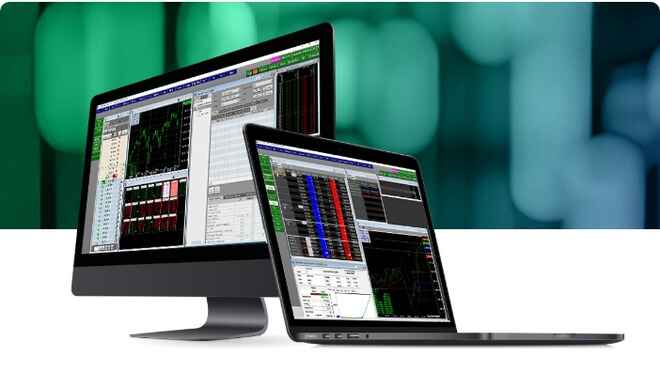There are many different types of fundamental and technical chart patterns market technicians focus on when making oil trading decisions and multiple ways to interpret them. This is why technical analysis is an art form. The key is to be able to recognize these patterns and implement a trading strategy based on what you believe the charts are telling you is going to happen next. As a trader, it is important to have a good understanding of the basic patterns before you can develop a strategy to give you a potential edge. When you combine a couple of these different methods, you really unlock the power of technical analysis. Throughout this piece we will outline popular tools you can use to create your own trading strategy for oil.
The Trend Line
You probably know the classic adage: the trend is your friend. There are dangers to fighting the trend; it leaves you with headaches and sleepless nights, wondering why you went against it. Sometimes the trend isn’t all that easy to identify, but it can help to look at charts over several timeframes. The trend line is one of the most basic charting tools. These are lines drawn across successively higher bottoms in bullish markets (moving up from lower left to top right), or successively lower tops in bearish markets (moving down from upper left to bottom right). A bullish trend is indicated by a series of higher highs and higher lows, and a bearish trend, by lower highs and lower lows. Look for three good tests of support or resistance. Breaking through a trend line is an important signal a trend is coming to an end.
You can see the trend in a very basic chart of the crude oil futures contract. In this case, I am looking at a daily continuation chart. The key to determine whether this is in fact a solid bearish trend is to look for three tests of resistance. To the far right of the chart, we see a possible shift in the long-term trend. The market bounces to a key resistance point, then bounces without much follow through—trading in an up down, up, down pattern. To signal a shift in trend, you want to look for two days of higher closes, with the second high above the previous day’s high. We can see in this crude oil chart below how the market has stayed below the trend line from November until the time this article was published.
Retracements
A retracement is a significant price adjustment of an existing trend. Traders commonly focus on Fibonacci retracements, and the three main levels are 38 percent, 50 percent and 62 percent of a prior move. I’m not going to get into all the complexities of Fibonacci analysis—just know what these levels are and what price points coincide with them in the market you are trading. They are key levels that act as a gravitational pull.
A two-day close through one retracement level can signal the market’s next move could likely be to the next retracement level. When a market closes below the 38 percent retracement for two days, we’ll often see a quick move down to the 50 percent level, because so many professional traders are watching and trading based on these levels. Participants may also try to defend these levels for as long as possible to minimize their losses on positions.
Looking at the crude oil chart again, I will add the Fibonacci retracements to it. You can see the move up from low at about 26.13 on January 20 to the high at about 34.82 on January 28 pushing up to the 38% retracement. As an oil trader, you would want to watch for a two-day close above the 38 percent retracement level (which comes in around 35.00). If this occurs, the market is likely to head higher and could push up to 50 percent retracement near 38.53.
Double-Top and Double-Bottom
A double top resembles the letter “M” and is marked by a resistance point that the market hits and then falls, rises back to the same resistance point or close to it, and falls again. A double bottom is the opposite of the pattern, resembling the letter “W.” Often, double-tops and double bottoms lead to head-and-shoulders patterns. The head and shoulders top is represented by three prominent peaks, while the bottom, three prominent lows.
The head-and-shoulders pattern is rarely in perfect symmetry. The first time the market makes the move, it retraces back and the second time it tries to retest it, it’s typically not as high or low as the first peak or bottom. What tends to occur is that market participants will pile in the market on the first move. When the market reverses, half of the people take positions off, and tend not to pile back in when the market reverses again. We can see these patterns in the crude oil chart below.
Of course, it’s very easy to see patterns in hindsight. But, it is exciting to see them developing and anticipate how to trade them. Consider it a five-stop process. Draw your trend line then look at your retracements and moving average signals. Look for chart patterns that indicate possible breakouts, and for double-tops and bottoms.
This is just a brief overview of three basic chart types; there are many more complicated patterns you can learn about and perhaps incorporate into your crude oil trading strategy. And of course, as an oil trader each individual will interpret what he/she sees on the chart in a unique way and create their own oil trading strategies. If you have any questions regarding this or other futures trading materials, please Contact Us.



